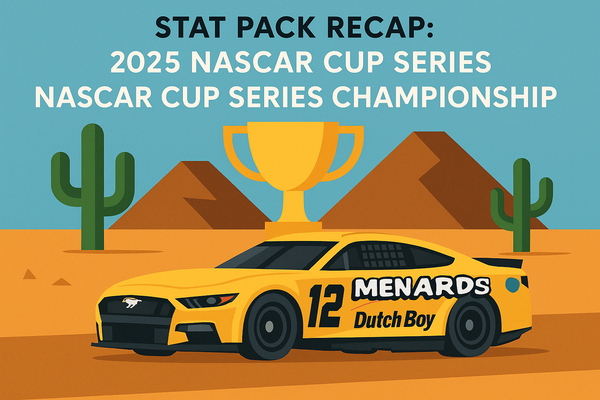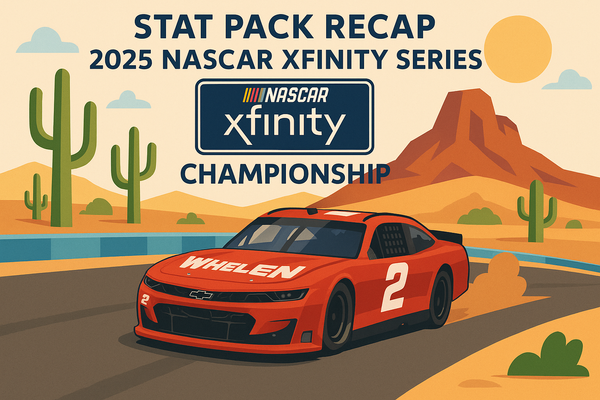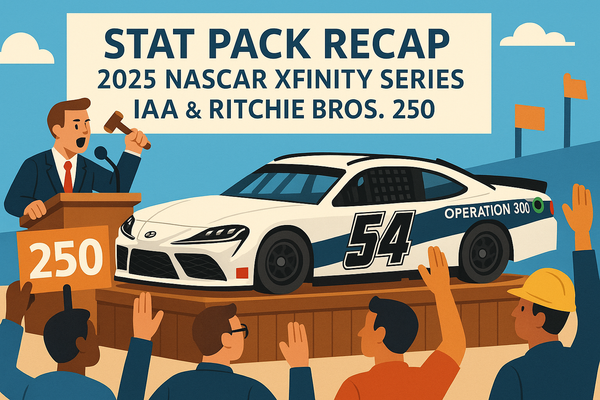Drivers and crew chiefs
Yesterday I wrote:
Perhaps all we can say is that if cars within the same team have similar average starts, running positions, and finishes, they're likely on similar setups - as you'd expect. I take this as vindication for PFAE: if cars within the same team are running very similar setups, and one of the drivers of those cars outperforms his average start over a large enough sample, whether by the expected finish for his start or relative to teammates, he's likely a quality driver. Harvick's been showing that for years.
I’m not completely happy giving all of the credit for a car’s in-race performance to the driver. We could instead credit the in-race performance of a car to the “human element”, consisting of the people involved in the decisions and performance of the car: the driver, the crew chief (perhaps, given examples such as the RCR command center, we should call this the “non-driver decision making”, but let’s leave it as the crew chief for now), and the crew. How can we do that?
I take PFAE as a terrific catchall metric for the in-race performance. It measures how many more positions a car gains from start to finish, given its starting position. You can see why that works in the chart here:

To assign credit to the three participants at play, we’d break down a car’s PFAE credit as follows:
- The over-the-wall pit crew gets credit for some positions gained above expected based on the speed of their normalized pit stops (normalized to account for four vs. two vs .damage-repairing stops).
- The crew chief would have to get credit for two things:
- Strategic decisions, like going for one stop or two
- Setup tweaks, like wrench and tire pressure adjustments
- The driver would presumably be credited with the rest.
The state of the world is such that public data is limited. Lap data is only available from 2020. Pit stop data is extremely noisy: Lap Raptor’s pit stop data, which comes from NASCAR and is only lightly massaged, is usually way off what’s presented on television broadcasts. As the data builds up though, it’ll be easier to programmatically de-noise the data and identify the events and aggregations that distinguish the three participants in each car’s performance.
If we can give credit to everyone individually, clearly slicing the pie of performance - instead of handing out empty plaudits and giving all the so-great drivers and wonderful crew chiefs each their own overlapping pies - I think fans and brands will be able to better connect with everyone involved. We know Patrick Mahomes is good, and it goes beyond just the Chiefs winning games: watch him, look at his individual passing stats. Over time, with concerted and public effort, the data will give us similar clarity and conviction for NASCAR drivers.




